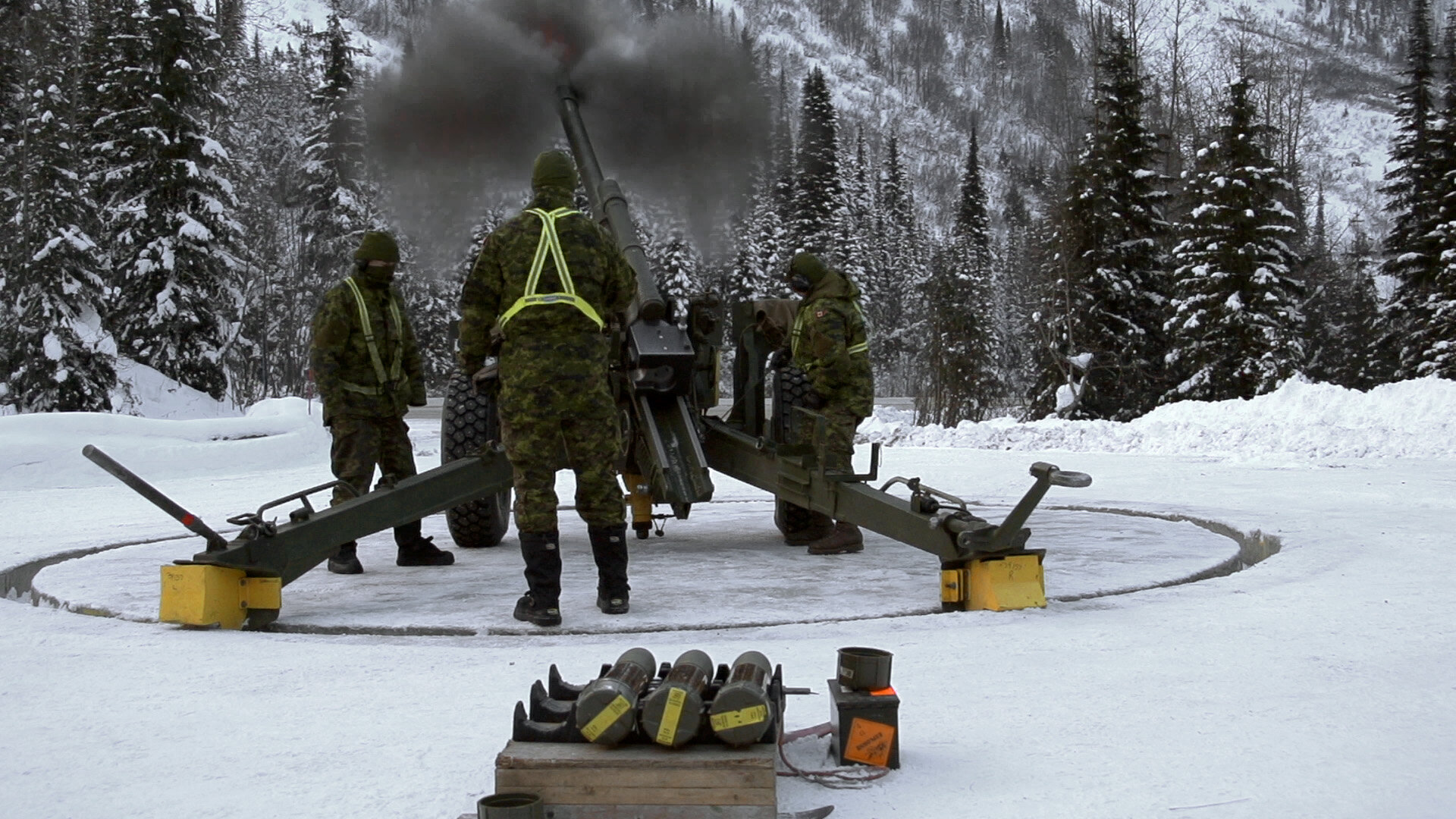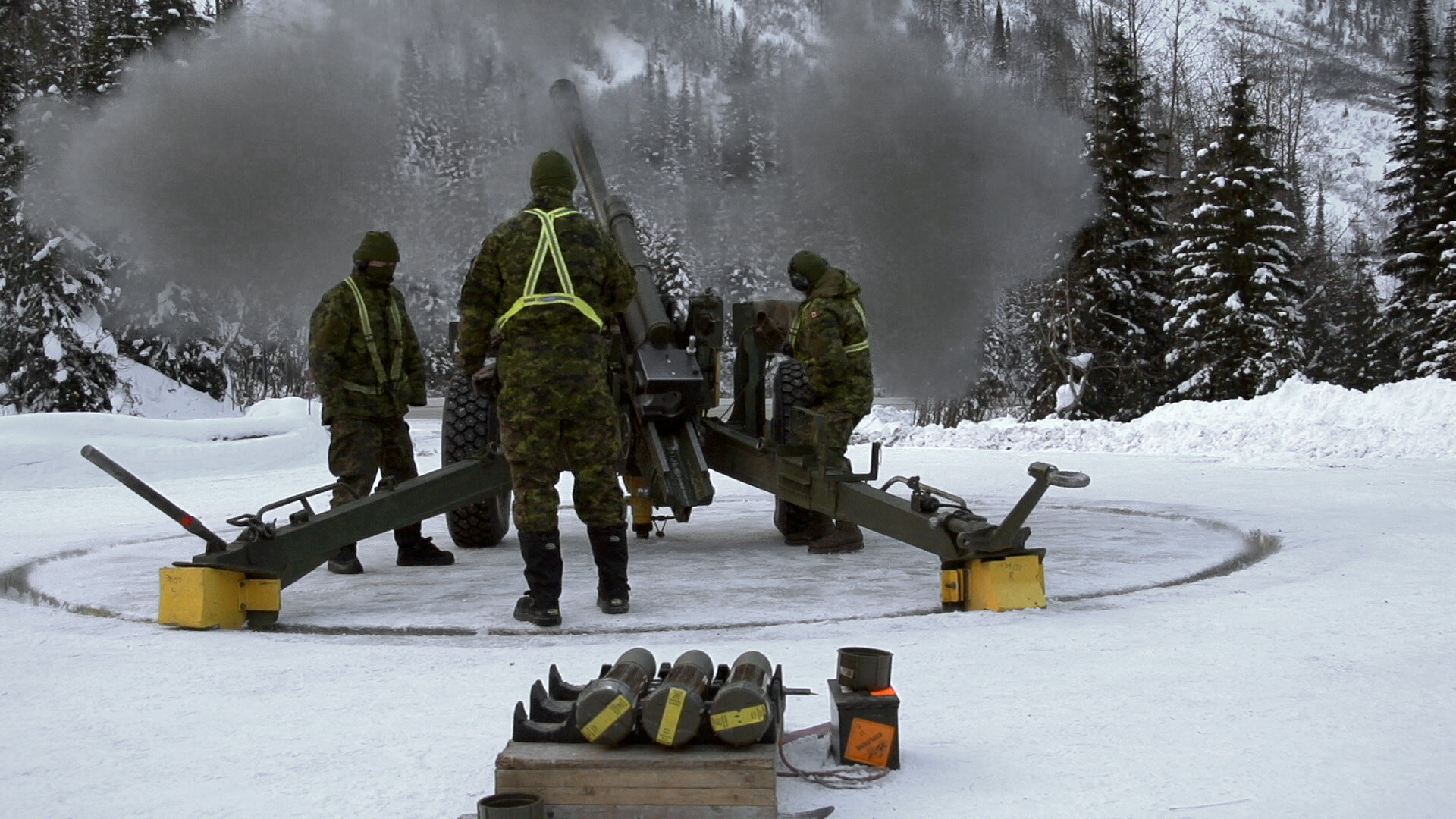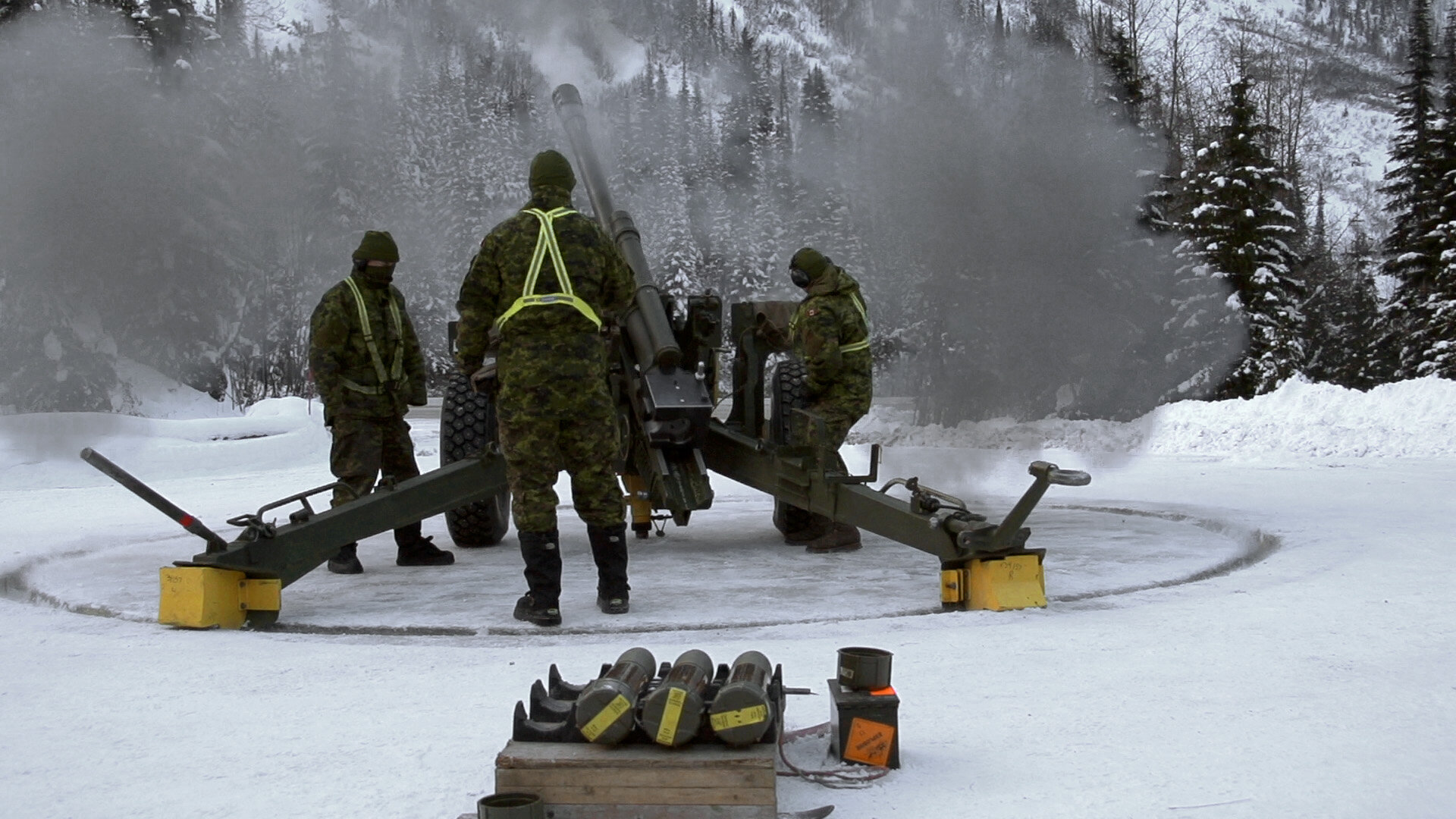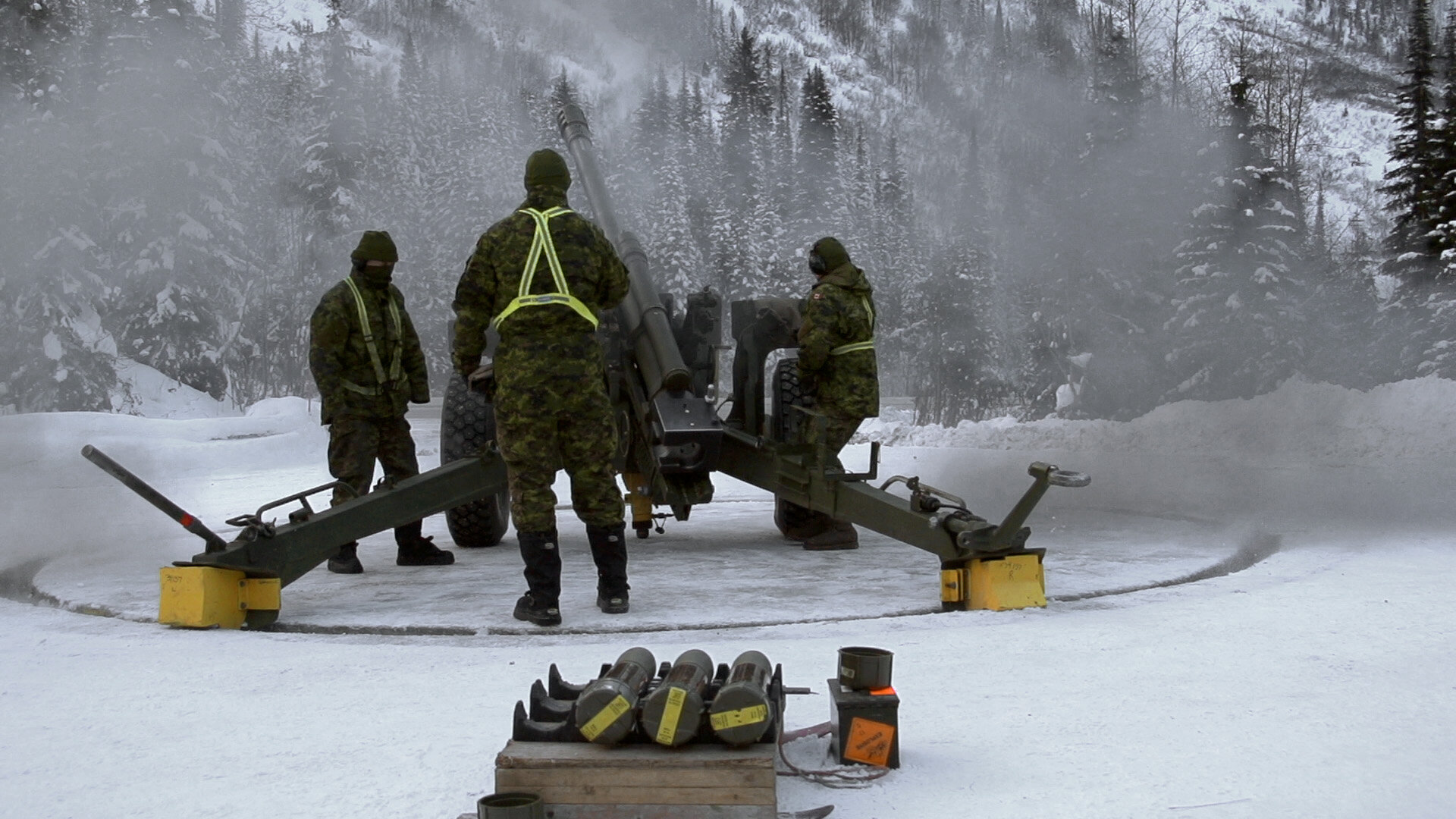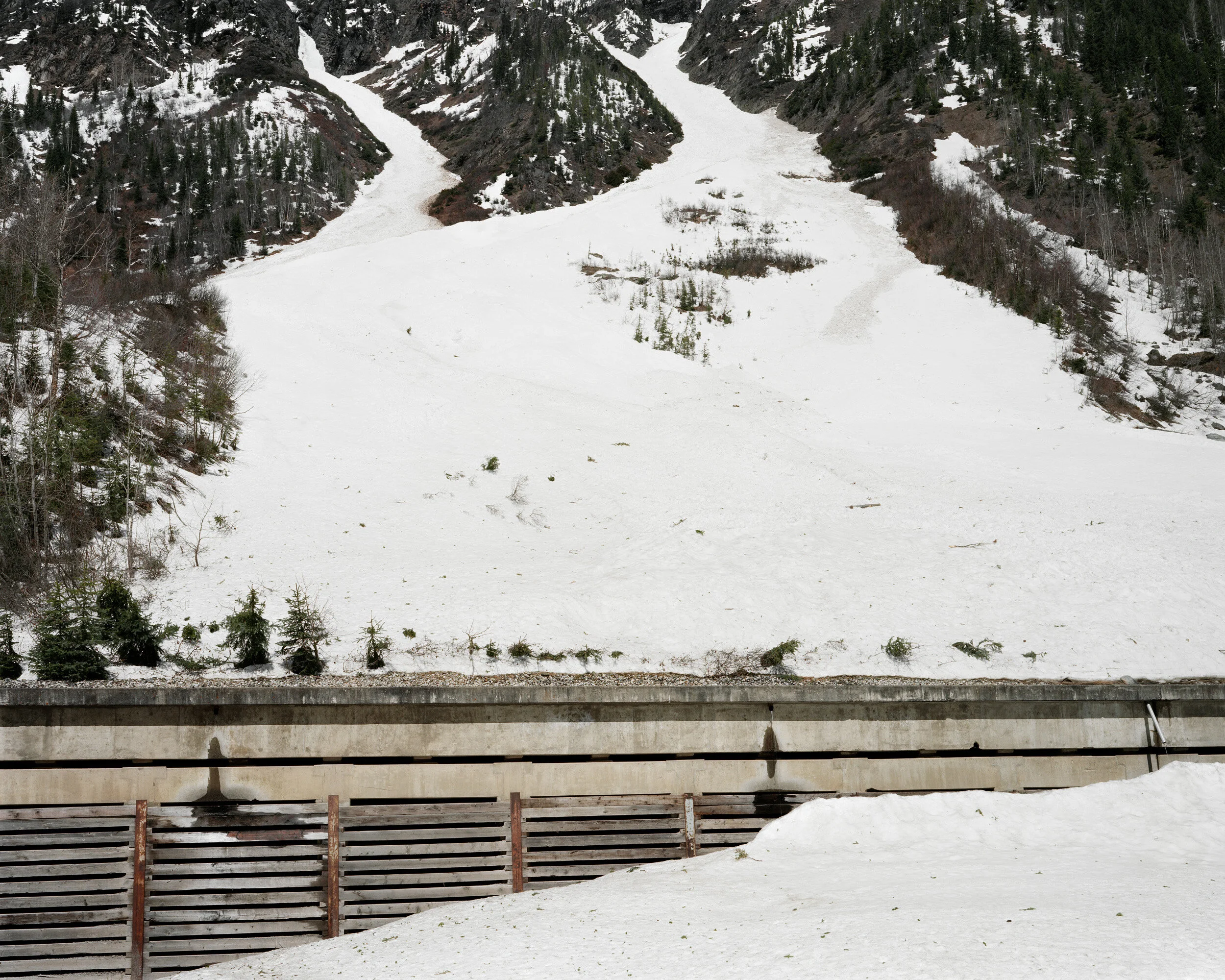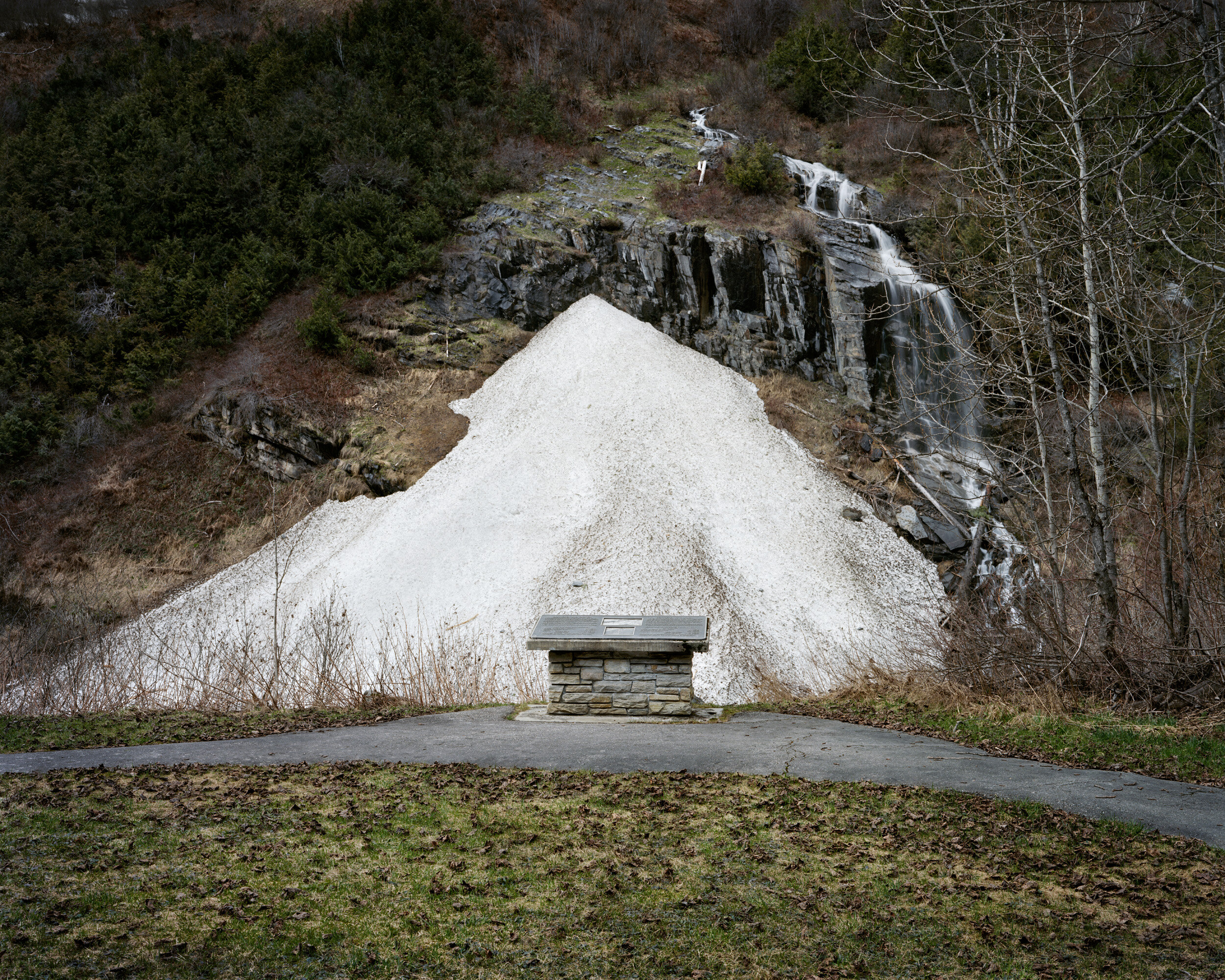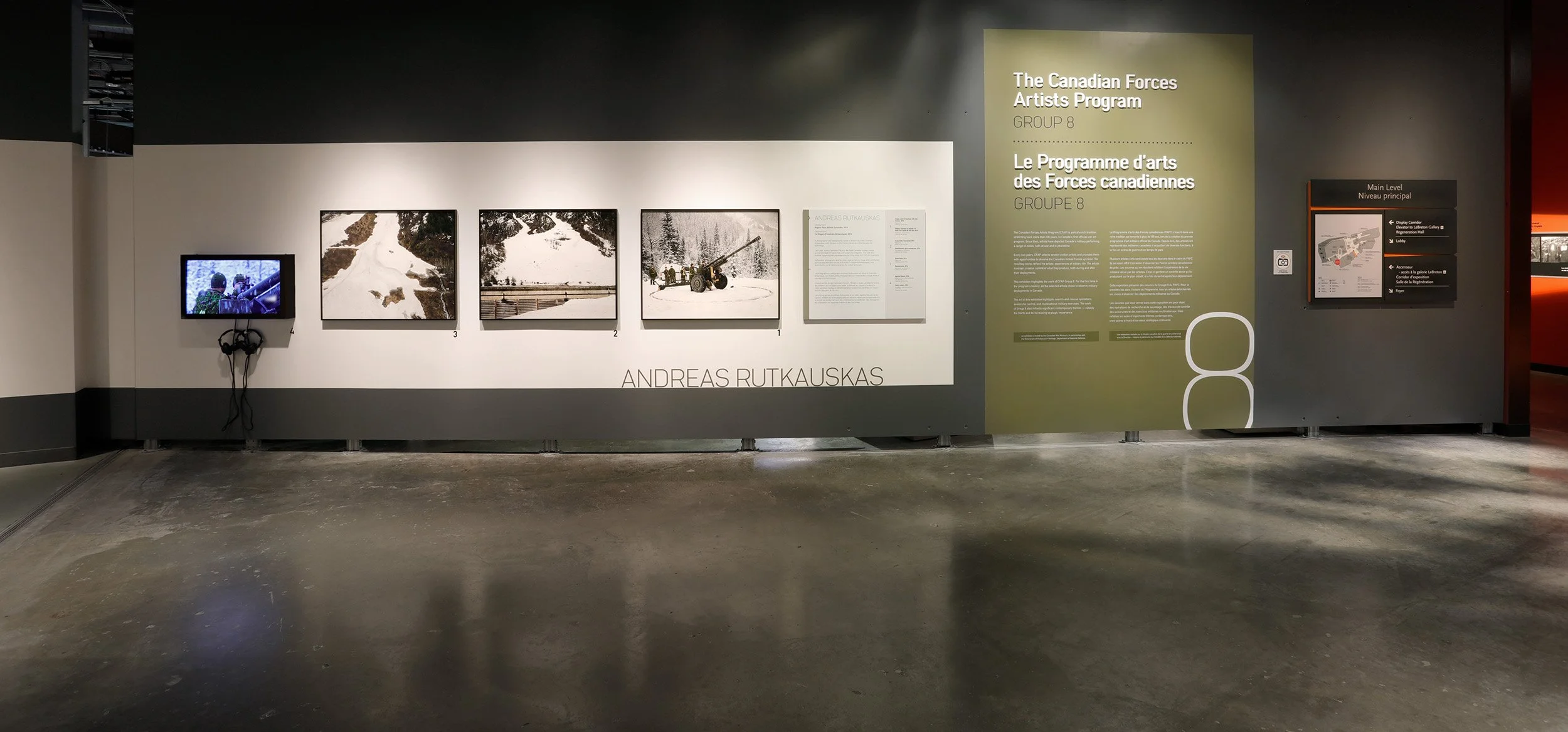AGAINST NATURE
The subject of my 2016 Canadian Forces Artists Program (CFAP) deployment was Operation PALACI, an avalanche control program in Rogers Pass, British Columbia, a critical transportation corridor prone to snow slides. Each year the Canadian Armed Forces sends artillery gunners to the area to help support avalanche mitigation measures run by Parks Canada. Part of this involves triggering planned avalanches in areas with dangerous snow build-up by firing shells from 105 mm Howitzer cannons.
Against Nature shows this application of military knowledge and firepower for civil purposes. The images highlight the technology needed to safely bring down the accumulated snow. Other photographs in the project reveal the often overlooked technologies that allow transportation to function in extreme environments, such as snow sheds that protect the TransCanada Highway from avalanches.
Against Nature, single-channel video installation. 6 min. 15 sec.
Snowslide
inkjet print on baryta, 32x40”. Shot in 2017, printed in 2020
Troops with C3 Howitzer 105-mm Cannon
inkjet print on Baryta, 32x40”. Shot in 2016, printed in 2020
The Canadian Forces Artists Program Group 8
Canadian War Museum, February 12, 2020 TO March 31, 2021
“The Canadian Forces Artists Program contributes to a rich tradition that began in 1916 with the Canadian War Memorials Fund and continued during the Second World War with Canadian War Records. The artists commissioned under those programs created over 5,000 works, pieces that formed the nucleus of the Canadian War Museum’s Beaverbrook Collection of War Art, which now includes close to 14,000 works.
When the Second World War ended, so too did Canada’s formal war art program. In 1950, when Canada went to war with Korea, no official war artists received commissions. Between 1968 and 1995, the Canadian Armed Forces Civilian Artists Program (CAFCAP) gave artists the chance to observe military personnel as they performed their duties at home and abroad. The Cold War, along with Canada’s involvement in peacekeeping, is reflected in much of the work produced by CAFCAP artists.
In 2001, the Department of National Defence instituted the CFAP. While previous programs had focused on visual art, this new iteration invited writers and musicians to apply as well. Some of the artists chosen for the program would deploy to the war in Afghanistan, to capture aspects of one of the Canadian military’s longest and most complex missions.
The 2020 exhibition of works by Group 8 artists at the Canadian War Museum features Philip Cheung, Rosalie Favell, Aislinn Hunter, Simone Jones, Emmanuelle Léonard and Andreas Rutkauskas. Tim Pitsiulak, an Inuit artist who participated in the CFAP in 2010, is also included. As with all CFAP participants, the artists in this multidisciplinary group maintained complete artistic independence over the works they produced during and after their deployments.
For the first time in the CFAP’s history, all the artists selected deployed in Canada. Their work reflects contemporary themes that resonate broadly, such as the North and its increasing strategic importance, and the changing Canadian environment. The nature of work in the military, with its inherent and potential risks, is also emphasized. Four of the artists included the Canadian Rangers, a component of the Canadian Armed Forces Reserve, as subjects. Rangers are responsible for patrolling isolated regions of the country and are drawn from the local population. Taken as a whole, this collection reflects the diversity of the work performed by the military on home soil and highlights aspects of it with which many Canadians may not be familiar.”
- Dr. Stacy Barker. Historian, Canadian War Museum. Excerpt from curatorial text, exhibition catalogue
Rogers Pass Snow Avalanche Control - A Summary by V. G. Schleiss, Environment Canada, Canadian Parks Service, 1990
Cover photograph by John G. Woods, Aerial view of Rogers Pass East. This document provides an excellent overview of the history of avalanche control activities in Rogers Pass
